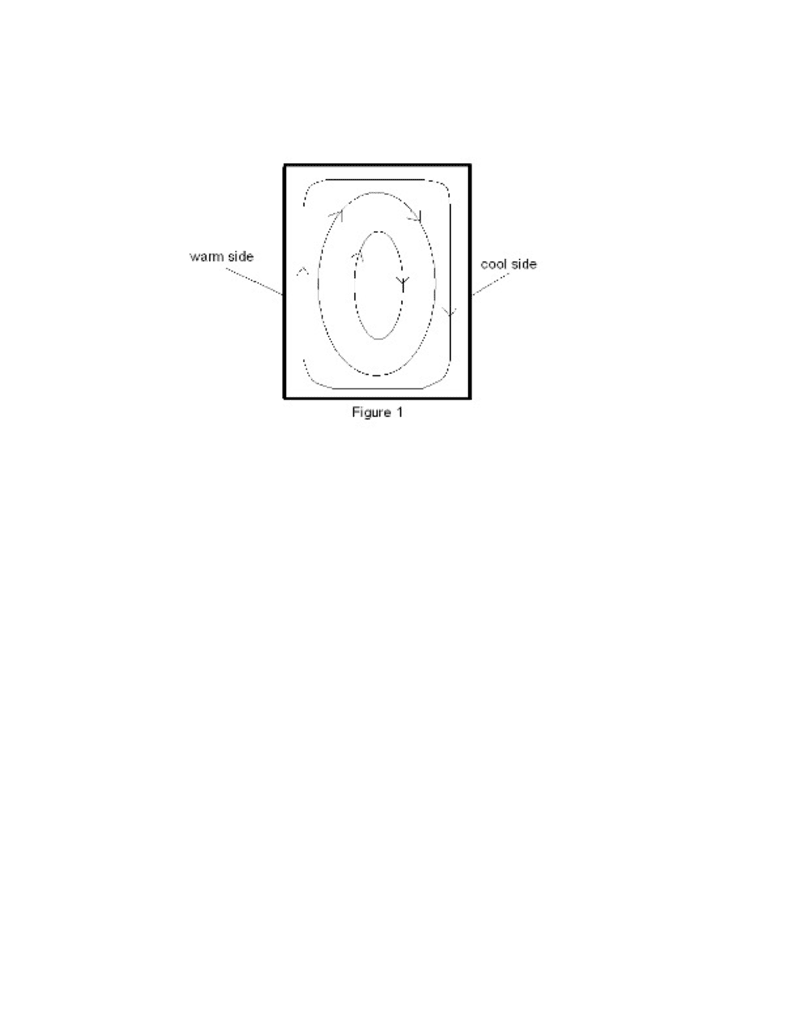There are three principal methods of heat loss through a window. These are radiation, conduction and convection. Radiation losses may be greatly reduced by means of an IR blocking (low E) coating applied to the warmer side of the window. Conduction losses can decreased by the choice of filling gas between the panes (we assume 2 or more panes) or by increasing the spacing between the panes. Increasing the spacing between panes to more than about .5-.75 inches (reference 1) results in increased bulk convection that more than compensates for a decrease in conduction loss. Figure 1 shows the effect of widely spaced panes. High quality windows use spacing of about .5” between panes. The common ways to improve performance beyond low E coatings and two air filled panes are changing the filling gas to argon or krypton or using 3 or more panes and therefore two or more gas filled gaps of about .5 inches each. This solution is expensive and heavy. Also, among the major heat losses in windows is the thermal conduction and air leakage through the frames that hold the glass panes. The close spacing of the panes make thermal conduction between the frames that hold the glass larger than it would be for more widely spaced panes.
Our proposed improvement involves using 2 panes of glass with appropriate IR (low E) coatings and a large air (or argon or krypton) gap. We find a solution to the large bulk convection that normally results.
For a vertical window we use fins that are made of a low thermal conductivity material, and that have a height to spacing ratio of about 1 to 10. This will cause the flow to be like that in Figure 2 with the warmed gas inside the glass slowed by the fins and recirculating behind them rather than flowing to the cool pane and dropping down the cool side. Here the cool side flow is also slowed by the fins and has some recirculation. Recirculating areas near the fins reduce the bulk flow around the window while the gas just spins locally.
The heat transfer in the recirculation regions is quite low because the gas tends to reach a near equilibrium temperature with the air external to the adjacent pane and recirculate stably. References 2 and 3 describe both the flow and the heat transfer for the geometry of figure 2. Note that the fins in figure 2 may be interleaved rather than directly across from each other.
References
[1] Heat Transfer By Free Convection Across a Closed Cavity Between Vertical Boundaries at Different Temperatures, C. K. Batchelor, Quarterly of Applied Mathematics, Volume XII, October, 1954, pp. 209ff.
[2] Heat, Mass, and Momentum Transfer, Rohsenow, W. M. and Choi, H. Y., Prentice Hall, 1981, pp. 153 ff.
[3] Numerical Solutions of Compressable and Incompressable Laminar Separated Flows, Rosche, P., Ph.D. Thesis, Department of Aeronautical Engineering, University of Notre Dame, 1968, pp. 385 ff.
Like this entry?
-
About the Entrant
- Name:Alan Kaplan
- Type of entry:individual
- Patent status:none





